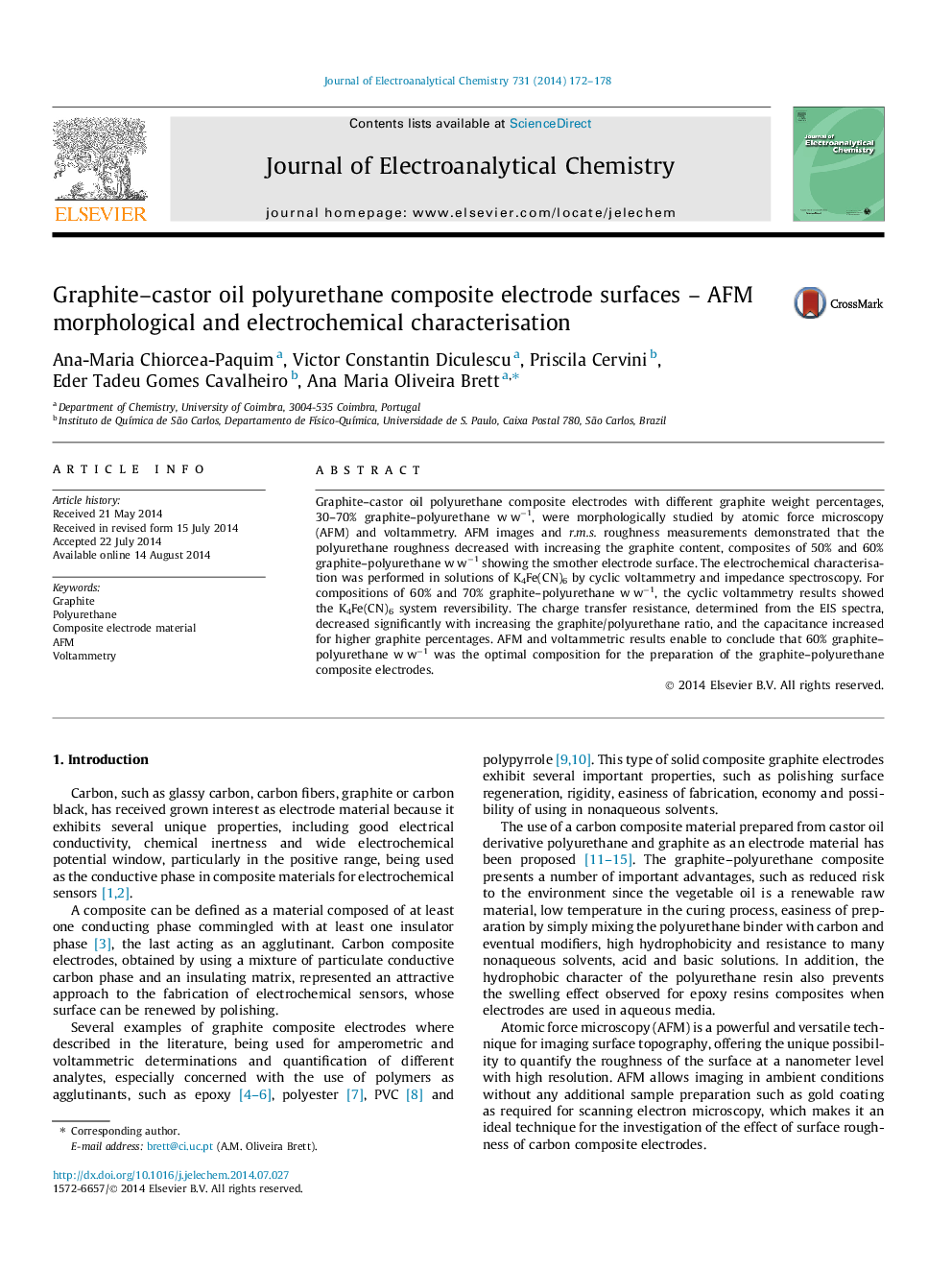| کد مقاله | کد نشریه | سال انتشار | مقاله انگلیسی | نسخه تمام متن |
|---|---|---|---|---|
| 218691 | 463212 | 2014 | 7 صفحه PDF | دانلود رایگان |

• Graphite–castor oil polyurethane composite electrodes were investigated.
• Characterisation by atomic force microscopy (AFM) and voltammetry.
• Electrochemical impedance spectroscopy characterisation.
• Composites of 60% graphite–polyurethane w w−1 showed the smother surface.
Graphite–castor oil polyurethane composite electrodes with different graphite weight percentages, 30–70% graphite–polyurethane w w−1, were morphologically studied by atomic force microscopy (AFM) and voltammetry. AFM images and r.m.s. roughness measurements demonstrated that the polyurethane roughness decreased with increasing the graphite content, composites of 50% and 60% graphite–polyurethane w w−1 showing the smother electrode surface. The electrochemical characterisation was performed in solutions of K4Fe(CN)6 by cyclic voltammetry and impedance spectroscopy. For compositions of 60% and 70% graphite–polyurethane w w−1, the cyclic voltammetry results showed the K4Fe(CN)6 system reversibility. The charge transfer resistance, determined from the EIS spectra, decreased significantly with increasing the graphite/polyurethane ratio, and the capacitance increased for higher graphite percentages. AFM and voltammetric results enable to conclude that 60% graphite–polyurethane w w−1 was the optimal composition for the preparation of the graphite–polyurethane composite electrodes.
Journal: Journal of Electroanalytical Chemistry - Volume 731, 1 October 2014, Pages 172–178